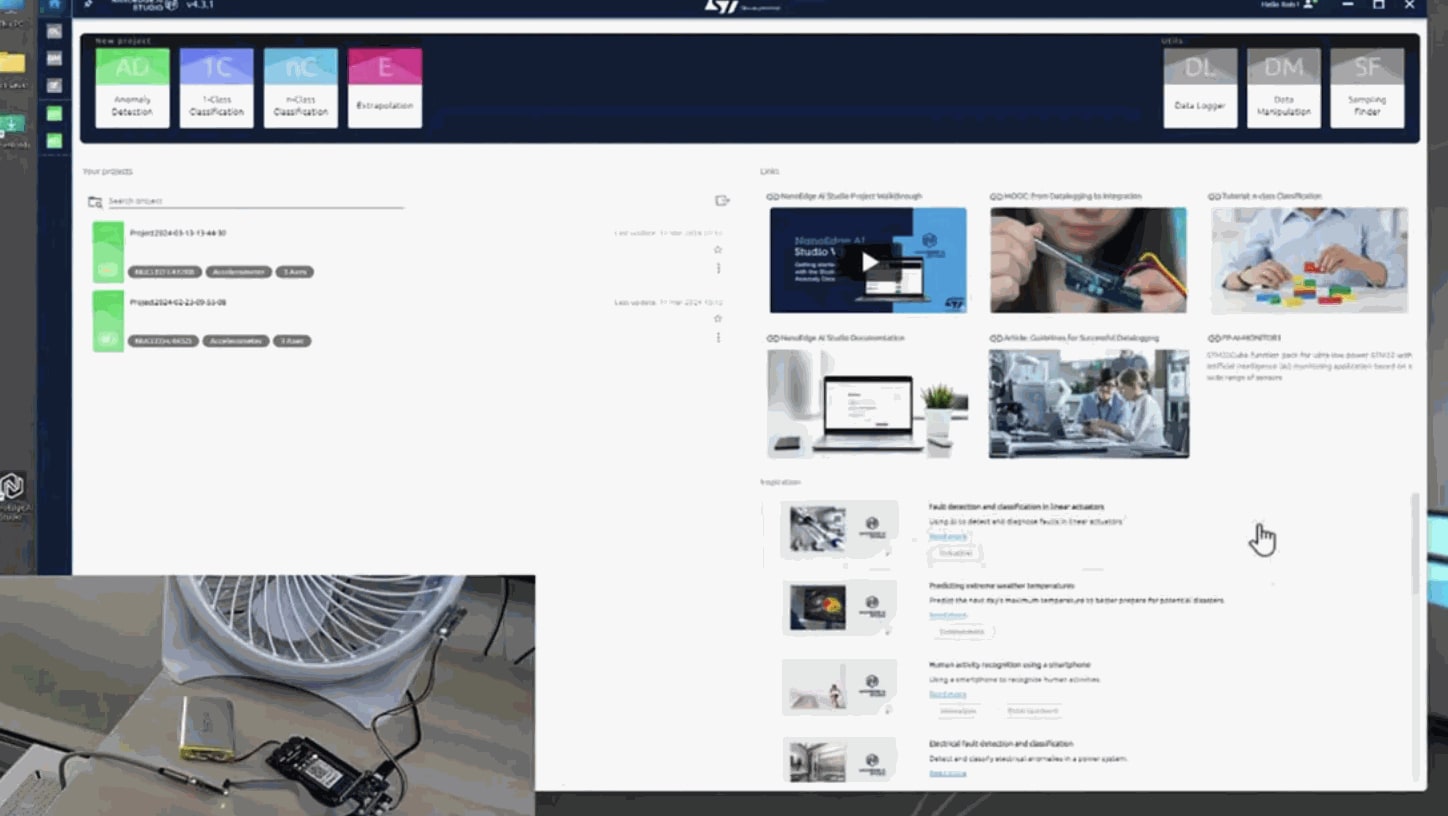Webinar Summary
The following summary is auto-generated from the webinar recording.
In today's rapidly evolving tech landscape, the integration of Artificial Intelligence (AI) into Internet of Things (IoT) devices is becoming increasingly essential. This blog will guide you through creating an edge machine learning (ML) solution using STMicroelectronics' NanoEdge AI Studio and Blues' connectivity solutions. We'll focus on how to add intelligence to previously disconnected products and securely relay alerts based on the inferences generated by those models.
Introduction to the Concept
As we delve into this topic, it's crucial to understand the context. The AI and IoT industries are currently at a pivotal moment, as highlighted by Gartner's hype cycle. IoT is in the trough of disillusionment, and AI is nervously heading down a similar path. The synergy between these two fields is essential for their success, and today we'll explore a small slice of that intersection.
What is Machine Learning?
Let's start by addressing the foundational question: what is machine learning? In simple terms, machine learning allows computers to learn from data rather than relying solely on explicit programming. This concept shifts the paradigm from instructing a computer on what to do, to allowing it to learn how to interpret data and solve problems on its own.
The Nature of Machine Learning Models
At its core, an ML model is essentially a file containing a massive set of integer arrays. These models are trained to recognize patterns in data, which could be images, text, or even sensor readings. However, the effectiveness of these models depends heavily on the quality of the training data provided.
Understanding Edge ML and Tiny ML
A subset of machine learning is Edge ML or Tiny ML, which focuses on deploying highly optimized ML models on low-powered devices, often microcontrollers. The benefits of processing data on the edge include enhanced privacy, as sensitive data remains on the device rather than being sent to the cloud.
Potential Use Cases
Applications for edge ML span various industries. From detecting anomalies in industrial machines to tracking environmental conditions, the possibilities are vast. The data generated can lead to actionable insights that improve efficiency and safety.
Getting Started with NanoEdge AI Studio
Today, we'll focus on using NanoEdge AI Studio, a tool designed for embedded developers, to create and deploy ML models on STM32 microcontrollers. This tool is user-friendly and doesn't require extensive data science knowledge.

Supported Models
NanoEdge AI Studio supports four types of ML models:
- Anomaly Detection
- Outlier Detection
- Classification Models
- Extrapolation Models
For this demonstration, we will focus on anomaly detection.
Setting Up the Environment
Before we jump into the technical demo, let’s go over the necessary hardware components. We will be using a triple-axis accelerometer to stream XYZ position values to the STM32-based Swan microcontroller from Blues.
Connecting the Components
Our setup includes the following:
- Triple-Axis Accelerometer (ADA fruit LIS3DH)
- STM32-based Swan microcontroller
- Notecard Cell+WiFi
The accelerometer will detect vibration patterns, which we will analyze using the ML model we create.
The Technical Demo
Now, let’s dive into the technical demo. We will create a new project in NanoEdge AI Studio and configure it to recognize the accelerometer as our input sensor.
Adding Signals
We need to define what constitutes a normal signal. To do this, we will stream data from the accelerometer. The goal is to gather a fair amount of data, which will help in training the model effectively.

Training the Model
Once we have sufficient data, we will proceed to train the model using NanoEdge AI Studio. The tool will help us select an appropriate library based on the data we provide.
Deploying the Model
With the model trained, we will compile the library and deploy it to the STM32 device. This process allows the device to start generating inferences based on the accelerometer data.
Generating Alerts
We will set up our system to send alerts whenever anomalous behavior is detected. This involves configuring the Notehub to monitor the incoming data and trigger alerts based on predefined thresholds.

